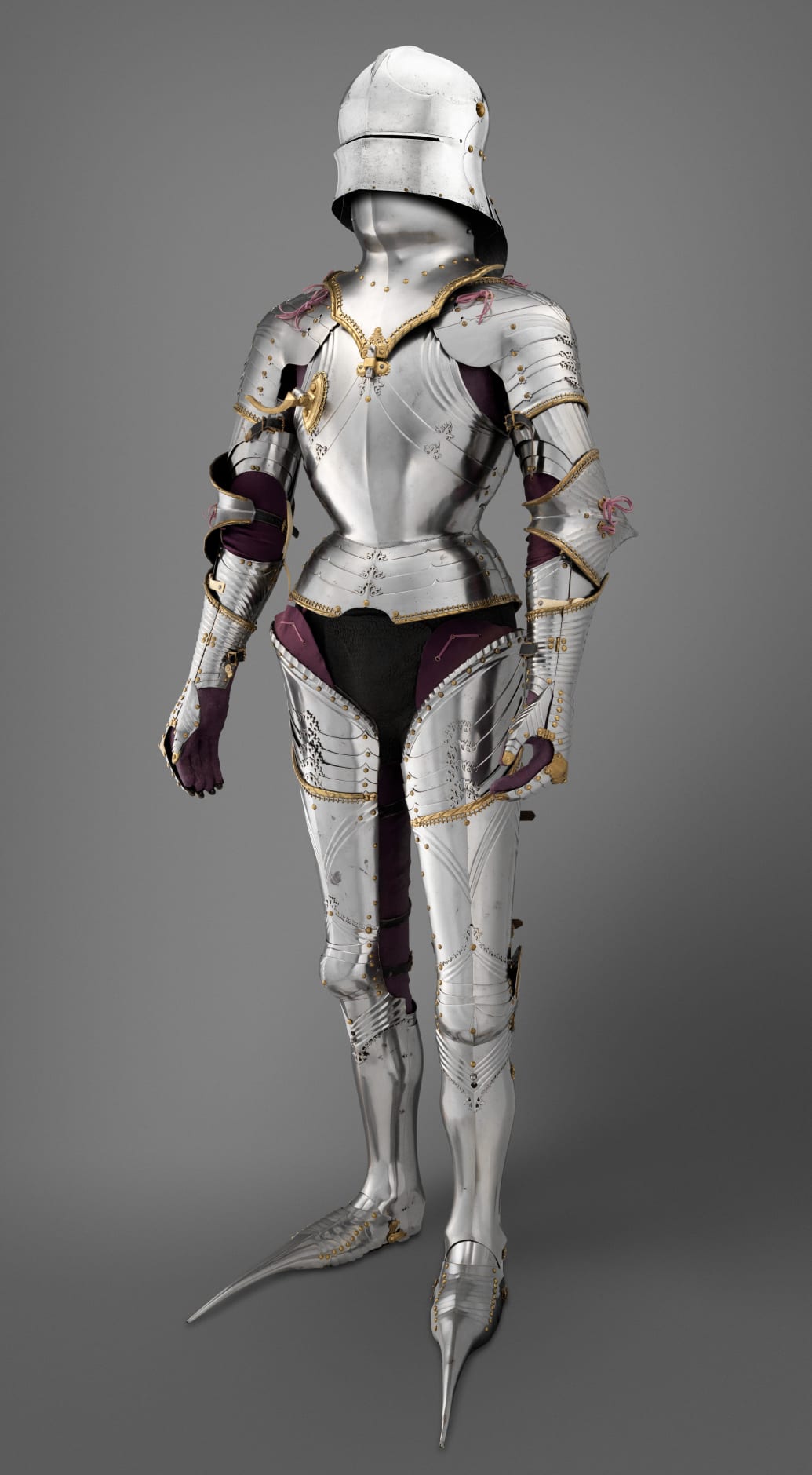History Net reproduces an article from Military History Quarterly which is a very good introduction to the manufacture and wearing of armour in the later middle ages and the era of courtly jousting. It is based upon a major exhibition earlier this year entitled Iron Men: Fashion in Steel at the Kunsthistorisches Museum in Vienna, and using the wonderful treasures the museum holds from the Imperial court.
Various key aspects of these armours are discussed, including their weight and the manoeuvrability they permitted, manufacture - including ordering and the time taken to produce pieces - the size of workshops and the interaction with fashion and design. The point is made that for royal and aristocratic men armour really was made to fit, and to fit well. Therefore as youngsters grew and older men put on weight replacements were necessary - the possibility for alterations was limited. So when we see today the armours of figures such as the Emperor Maximilian I or King Henry VIII we really are seeing these men as they appeared to contemporaries - slight in the case of the youthful Archduke and future Emperor, bulky in that of the ageing King.

Field armour of Archduke Maximilian by Lorenz Helmschmeid of Augsburg 1479-80.
The suit of armour is in the Kunsthistorisches Museum in Vienna, the helmet is now in the Metropolitan Museum in New York.The two were reunited for the 2019 exhibition The Last Knight in the Met on the Emperor.
Image: Daily Beast
The article, which provides a digest of the book accompanying the exhibition, and contains some fascinating vignettes from the historical record of armourers at work, can be accessed at What Made A Good Suit Of Medieval Armor?
On a related topic I also came across another online piece, this time a discussion on wearing armour, and, relevant to those of us with impairment to our natural vision, which looks as to how the short-sighted, or long-sighted, coped on the battlefield when squinting through a visor.
The discussion, from history.stackexchange, can be viewed at How did knights who required glasses to see survive on the battlefield?


1 comment:
> how the short-sighted, or long-sighted, coped on the battlefield when squinting through a visor
I'm sure one reason many early medievil aristocrats scoffed at the idea of reading, and many were illiterate, was a concern not to risk worsening their eyesight with close work, especially as artificial lighting in those days was fairly poor.
One aspect of Archduke Maximilian's armour which literally stands out is the ludicrously long spikes on his foot armour. I wonder if these had a practical purpose, as offensive weapons for use when mounted on horseback to kick out at and stab opponents crowding round him! That said, if a duke ever was in such a predicament, when his guards were presumably supposed to surround and protect him, then his prospects must have been grim even with Rosa Klebb style foot daggers!
John R Ramsden
Post a Comment